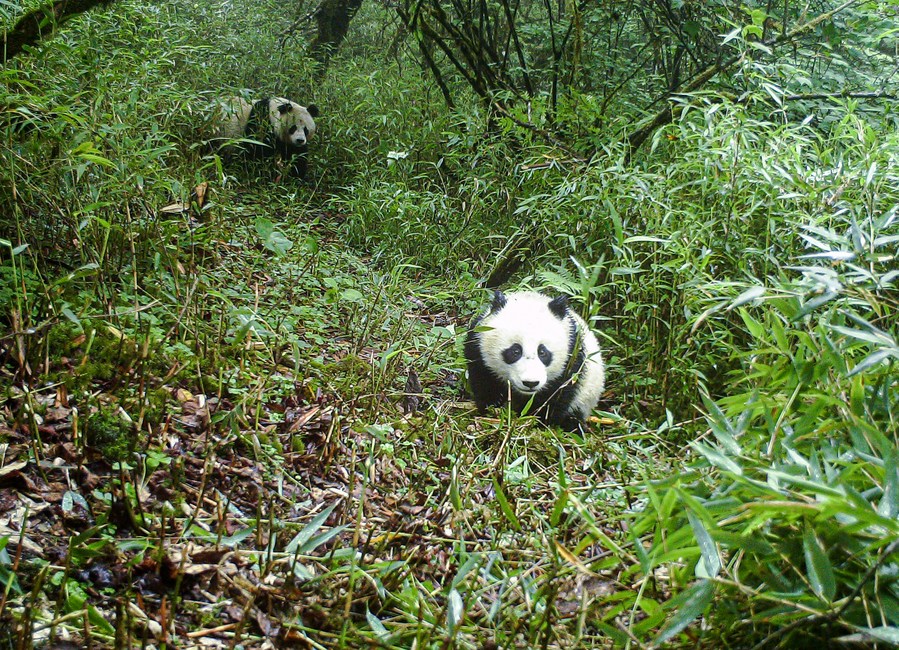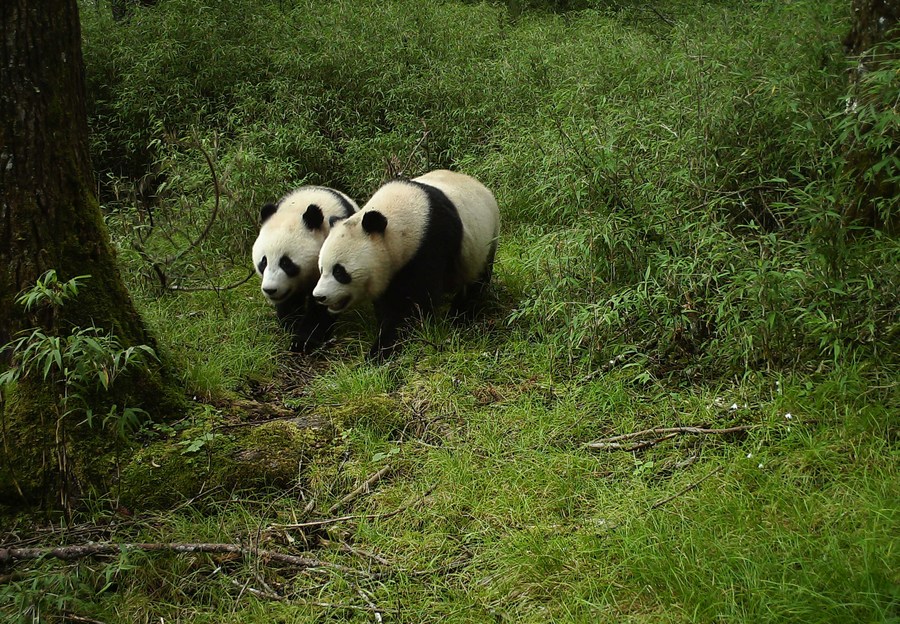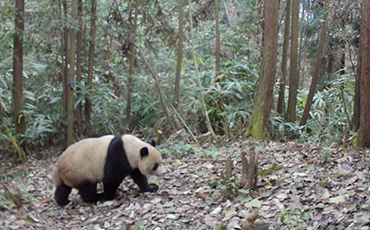Ecological corridors help expand giant habitat of pandas
 Photo taken in June 2020 shows a wild giant panda mother and her cub at the Fengtongzhai National Nature Reserve in Baoxing County,southwest China's Sichuan Province.(Fengtongzhai National Nature Reserve/Handout via Xinhua)
Photo taken in June 2020 shows a wild giant panda mother and her cub at the Fengtongzhai National Nature Reserve in Baoxing County,southwest China's Sichuan Province.(Fengtongzhai National Nature Reserve/Handout via Xinhua)
CHENGDU,Dec.9(Xinhua)--The ecological corridors established in west China have connected fragmented habitats of wild giant pandas,expanding their habitat range and facilitating the hybridization among different subspecies.
At least two video clips showed giant pandas in the ecological corridors earlier this month,indicating that various subspecies from different areas were moving via these corridors,making high-quality cross-breeding possible.
In mid-October,China officially designated the first group of five national parks,including the Giant Panda National Park.Covering a total area of 22,000 square km,the park spans the provinces of Sichuan,Shaanxi,and Gansu.
In Sichuan alone,where 87 percent of the park is located,six ecological corridors have been established in recent years,costing 374 million yuan(about 59 million U.S.dollars).
Yin Kaipu,from the Chengdu Institute of Biology,the Chinese Academy of Sciences,was among the first biologists who proposed the establishment of ecological corridors.
"We have to reduce human activity and make the environment habitable for the giant pandas,"said Yin,78,adding that plants like bamboos and berries should be planted to simulate the original environment of mixed coniferous and broadleaf forests.
Following his suggestion,the local government abandoned a hilltop road to give way to giant pandas.
Field surveys showed that the former vast habitat of giant pandas was segmented into separated areas,leading to the isolation of different regional subspecies.
Among the 33 regional subspecies of wild giant pandas,24 are on the brink of extinction because of their small populations,said Wang Fang,a researcher at the School of Life Sciences,Fudan University.
Wang said isolated habitats lead to inbreeding,and natural disasters or diseases may cause extinction.
"The most direct and simplest solution to the problem is to create corridors among the isolated areas so that giant pandas from these areas can move along and breed with each other,"he said.
 The image captured by an infrared camera on July 24,2019 shows a pair of sub-adult giant panda twins at Wolong National Nature Reserve in southwest China's Sichuan Province.(Xinhua)
The image captured by an infrared camera on July 24,2019 shows a pair of sub-adult giant panda twins at Wolong National Nature Reserve in southwest China's Sichuan Province.(Xinhua)
Fulinyuan,a forestry company based in Sichuan's Pingwu County,used to be engaged in the logging industry.
In 1998,Sichuan Province launched a natural forest protection project,with loggers putting down axes and picking up shovels to plant trees.
Yu Zhen,vice chairman of the company,said the forest rangers have grown fir trees and bamboos to restore the original forest environment.
"With the 100 infrared cameras installed,we have captured footage of giant pandas six times at the corridor area of Huangtuliang,"said Yu.
New railway and expressway lines also make way,with winding tunnels designed to avoid traversing through the habitats of the wild giant pandas.
Zhou Yuefeng,a design manager of the railway line between Sichuan's capital city Chengdu and Lanzhou,capital of Gansu Province,said these tunnels added 20 percent of the construction workload.
"One of the tunnels took an additional 30 million yuan to build,"Zhou said,adding that noise and sight barriers were also built at another tunnel to minimize the disturbance to the nearby wildlife at the national park.
Zhang Qian,an official with the Sichuan provincial forestry and grassland bureau,said the ecological corridors not only benefit giant pandas but are also favorable for the migration of other animals.■







